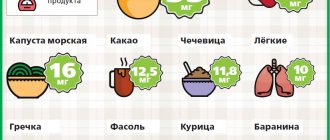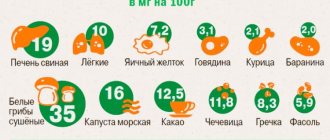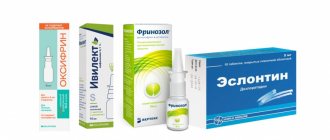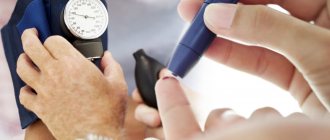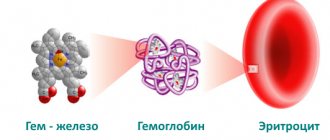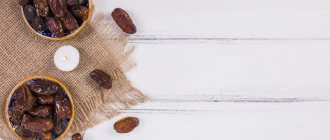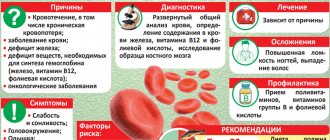| Place | Name | Characteristics in the rating |
| The best tablets and capsules to increase hemoglobin |
| 1 | Sorbifer Durules | Best quality. Features slow release of iron |
| 2 | Tardiferon | Prolonged action |
| 3 | Feroglobin-B12 | Rich vitamin composition |
| 4 | Ferretab | Has a positive effect on intrauterine development of the fetus |
| 5 | Fenyuls | Effective for latent forms of anemia |
| The best injections to increase hemoglobin |
| 1 | Ferinject | Better efficiency. Quick help for heavy blood loss |
| 2 | Cosmopher | Has the lowest toxicity |
| 3 | Venofer | Quickly replenish iron losses |
| 4 | Lickferr | Has a cumulative effect |
| 5 | Ferrum Lek | Copes with a critical drop in iron levels |
| The best syrups and solutions to increase hemoglobin |
| 1 | Floradix Liquid Iron | Best for pregnant women in any trimester |
| 2 | Maltofer | Effective in children and the elderly |
| 3 | Ferlatum | Best for preventing anemia |
| 4 | Totema | Effectively stimulates hematopoiesis |
| 5 | Aktiferrin | Approved for use in newborns |
Iron supplements
The person himself is unlikely to be able to determine which particular drug will allow him to return to his previous abnormal hemoglobin levels. The fact is that often the effectiveness of a particular drug largely depends on the human body and its characteristics. All such products are synthetic substances, the use of which allows you to restore the level of iron in the body. They increase the performance of various organs and thus restore hemoglobin levels.
Nowadays, medicines containing so-called divalent iron are widely used in medical practice. The drug ions quickly enter the bloodstream and begin to affect the body. In addition, recently new drugs have appeared that contain ferric iron. Their efficiency is an order of magnitude higher. At the same time, in order for the active ingredients to be absorbed faster, doctors recommend taking them together with ascorbic acid. Once in the body, iron begins to interact with transferrin, after which it enters the human bone marrow and liver.
It should be said that the most modern and advanced medicines have significantly fewer side effects than drugs of the past. The patient also needs to understand that taking medications containing iron must be under the supervision of a doctor. After all, uncontrolled use can cause harmful consequences and serious complications.
Today, pharmacy chains offer a large selection of drugs containing iron. There are products marketed in the form of tablets or capsules, some in the form of injections and liquid solutions. At the same time, practice shows that it is tablet drugs that act better on the body than others.
Medicines that increase hemoglobin levels
Here is a list of drugs that can be used to effectively increase the level of hemoglobin in human blood .
increase hemoglobin in the blood
- Iron Chelate (capsules). This product is considered a dietary supplement and not a medicine. It is produced by the domestic enterprise Equalar. It should be said that the “Chelate” complex involves combining minerals with acids for more efficient absorption. The iron ions present in this preparation are located inside the amino acid shell. This allows it to quickly dissolve and be absorbed. The advantage of the drug is the absence of any side effects.
- Maltofer Fol. This drug comes in the form of a chewable tablet that must be chewed and then swallowed. This product uses ferric iron, which allows the body to very quickly restore normal hemoglobin levels.
- Fenyuls. It contains iron and a number of vitamin supplements and is easily absorbed by the body.
Now you know how to properly increase hemoglobin in the blood !
Treatment of iron deficiency anemia and iron deficiency
27.05.2021
Treatment of iron deficiency anemia and iron deficiency
About modern ideas about the correction of iron deficiency and the main characteristics of iron-containing drugs, the principles of their selection and dosage in iron deficiency states. Diet for iron deficiency and sources of iron in food
The main source of iron for humans is animal products. In nature, iron exists in two chemical forms: 2-valent (heme) and 3-valent (non-heme). Heme iron is well absorbed in the intestine. The richest meats in heme iron are beef, especially beef and blood sausage. There is much less heme iron in poultry and fish. Liver (pork and veal), kidneys, heart, liver sausage are rich in ferritin and hemosiderin, containing non-heme iron (the latter is poorly absorbed in the gastrointestinal tract). A lot of non-heme iron is found in some brands of red wine, fruit juices, apples, pomegranates, buckwheat, dairy products, eggs, nuts and chocolate. The bioavailability of such iron is minimal, and all these products are not a source of iron. Vegetarianism is a strong risk factor for iron deficiency anemia (IDA) at any age. At the same time, the diet should include greens, vegetables, and fruits, since iron absorption improves with the presence of vitamin C in food. Iron absorption is impaired by tannin (found in tea and coffee), phytin (found in rice, soy flour), milk and cottage cheese due to its high calcium content. Since the absorption of iron from food is limited, drug therapy for anemia is the mainstay.
The World Health Organization (WHO) conducted a global study between 1993 and 2005, which showed that 24.4% of all inhabitants of the globe suffer from various forms of anemia. Anemia most often occurs in preschool children (47% of the general population), pregnant women (41.8%) and non-pregnant women of childbearing age (30.2%). In the structure of anemia: 37% is iron deficiency anemia, 27% is anemia due to chronic diseases (CD).
Among women of fertile age, iron deficiency anemia (IDA) occupies a leading position. Anemic syndrome is the most common hematological syndrome encountered in clinical practice. Anemia is not a diagnosis, but only a syndrome that requires a special differential diagnostic algorithm.
WHO research indicates that IDA is the third most common cause of temporary disability in women aged 15–44 years. Along with IDA itself, there is a hidden iron deficiency, which in Europe and Russia is 30–40%, in some regions – 50–60%. According to WHO, iron deficiency is determined in 20–25% of all infants, 43% in children under 4 years of age and up to 50% in adolescents (girls). Thus, the most common anemias both in Belarus and in other countries are IDA and ACD. Anemia is a leading factor in the deterioration of a patient’s well-being; according to rough estimates, it affects 2.4 billion of the world’s population.
The main reasons for the development of iron deficiency anemia are: blood loss (heavy menstrual bleeding, pregnancy, childbirth, gastrointestinal, pulmonary, kidney disease); iron absorption disorders (resection of the stomach and intestines, pancreatic insufficiency, celiac enteropathy, Crohn's disease); increased need for iron (rapid growth, premature babies, newborns, adolescents, pregnancy and lactation); insufficient dietary intake (vegetarian or vegan diet).
It must be remembered that IDA is the final stage of severe iron deficiency, in which erythropoiesis (hematopoiesis) decreases and, as a result, the hemoglobin content decreases.
There are three stages of iron deficiency:
- prelatent;
- latent;
- manifest.
Prelatent iron deficiency is characterized by a decrease in microelement reserves without a decrease in iron consumption for erythropoiesis. Latent iron deficiency is observed when the microelement reserves in the depot are completely depleted, but there are no signs of the development of anemia. Manifest iron deficiency, or iron deficiency anemia (IDA), occurs when the hemoglobin pool of iron decreases and has characteristic symptoms. A decrease in serum ferritin concentration below 12 μg/L in healthy children and 15 μg/L in adults, adjusted below 30 μg/L in children and 70 μg/L in adults with infectious or inflammatory diseases, means an inevitable decrease in hemoglobin concentration in the future.
Treatment of iron deficiency anemia. The principles of treatment of IDA include the following:
- the effect cannot be achieved with diet alone;
- Iron supplements are prescribed mainly orally, before meals;
- An improvement in the general blood test does not mean that the body’s iron supply has been restored;
- After normalization of hemoglobin levels, iron intake should be continued for another 1–2 months. with a reduction in the daily dose by half to fill the depot.
The basis of pathogenetic therapy for IDA is the use of iron supplements orally. Treatment with iron supplements should be long-term and depend on the initial severity of anemia (hemoglobin level and iron deficiency).
At the outpatient stage, treatment is carried out when the hemoglobin level is >80 g/l and the patient’s general condition is satisfactory. Oral administration of iron-containing drugs at a dose of 200-300 mg/day for 4-6 weeks until hemoglobin levels normalize, after which the drug continues at a dose of 100 mg/day for 2-3 months until the ferritin level is at least 40 μg/l. It is necessary to find the cause of iron deficiency and eliminate the cause of iron deficiency - this is treatment of the underlying disease that caused iron deficiency.
Principles for choosing an iron supplement for therapy
Currently, oral iron preparations are divided into two main groups: ionic and nonionic (the latter are represented by the protein and hydroxypolymaltose complex of ferrous iron).
Ionic preparations are represented by salts of 2-valent iron, including iron sulfate (ferrofol, tardiferon, ferroplex, sorbifer, ferro-foil, etc.); ferric chloride (hemofer); polysaccharide compounds - gluconate-fumarate combinations (heferol, ferronal, megaferrin). Ferrous chelates (citrate, lactate, gluconate, succinate) are better absorbed than ferrous sulfate. In case of intolerance to salt preparations of ferrous iron, which are currently the most effective in treating anemia and replenishing iron depots, it is possible to use nonionic preparations of ferrous iron in the form of a hydroxypolymaltose complex (maltofer, biofer, ferrum lek, etc.).
When choosing a drug and the optimal dosage regimen, it is necessary to remember that an adequate increase in hemoglobin levels in IDA can be ensured by the intake of 30 to 100 mg of ferrous iron into the body. Considering that with the development of IDA, iron absorption increases by 25–30% (with normal iron reserves in the body - only 3–7%), 100 to 300 mg of ferrous iron per day is prescribed. The use of higher doses does not make sense, since iron absorption does not increase. The degree of absorption of 2-valent iron salts is several times higher than that of 3-valent iron, therefore preparations containing 2-valent iron give a quick effect and normalize hemoglobin levels on average after 1–2 months, and normalization of iron levels in the depot occurs after 3 –4 months from the start of treatment and depends on the severity of anemia and the dose of the drug. Longer use of drugs containing iron in the 3-valent state is required; in case of copper deficiency in the body, they will be ineffective. Normalization of hemoglobin levels during treatment with a ferric iron preparation will occur only after 2–4 months, and replenishment of iron deficiency in the depot will occur after 5–7 months from the start of therapy. The degree of absorption is also reflected in the incidence of side effects. The undesirable effect of solid forms of iron preparations (tablets, capsules) on the gastrointestinal mucosa can be reduced by taking them with meals, but this reduces the absorption of iron.
When taking the drugs in a sufficient dose, an increase in the number of reticulocytes is observed on the 7-10th day from the start of treatment. Normalization of hemoglobin levels is observed after 3–4 weeks from the start of treatment, and in some cases it lasts up to 6–8 weeks. The total duration of treatment depends on the initial severity of anemia. Standard terms for ferrotherapy of IDA: for mild severity - 4-6 weeks, for moderate severity - 8-12 weeks, for severe severity - 16 weeks or more. When using ferrotherapy drugs internally, nausea, vomiting, anorexia, constipation most often occur (since iron binds hydrogen sulfide, which is a physiological stimulant of motility), less often - diarrhea, a metallic taste in the mouth, staining of the mucous membranes and teeth black, allergic reactions , headache. These side effects lead to frequent refusal of treatment by patients.
The bioavailability of divalent iron salts is several times higher than that of trivalent iron salts, since they diffuse freely through the channels of DMT1 proteins and ferroportin. The pharmacological effect of the drugs is rapid, and normalization of hemoglobin levels occurs on average after 2 weeks - 2 months, and replenishment of iron stores occurs within 3-4 months from the start of treatment, depending on the severity of anemia and the dosage of the drug. Therefore, WHO recommends ferrous iron preparations as initial therapy for iron deficiency anemia. The absorption of ions from ferric iron preparations is slower, since active (energy-dependent) transformation with the participation of ferrooxidases is required. Therefore, such drugs require longer use, and in case of copper deficiency in the body they will not be effective at all.
The medicinal product Ferrofol produced by Minskintercaps Unitary Enterprise
contains in one capsule 50 mg of iron (II) sulfate and 500 mcg of folic acid.
Using Ferrofol in an average daily dosage of 1 capsule 2-3 times a day 1 hour before meals (100-150 mg per day), the goal of treating iron deficiency anemia is achieved - the introduction of iron in the amount necessary to normalize hemoglobin levels, complies with WHO recommendations on optimal therapeutic dose. The drug Ferrofol meets the basic requirements for treatment with iron supplements:
- sufficient elemental iron content in the preparation;
- the use of ferrous sulfate, which provides the greatest bioavailability;
- administration of folic acid, which plays an important role in hematopoiesis, with an iron supplement; the lack of these vitamins causes a disruption of DNA synthesis in hematopoietic cells, which negatively affects the rate of hemoglobin synthesis.
Advantages of the drug Ferrofol:
is produced in the form of long-acting capsules, the active ingredients are contained in pellets (microgranules), which ensure their absorption in the upper part of the small intestine, and therefore there is no local irritant effect on the gastric mucosa, which ensures good gastrointestinal tolerability. The use of pellets in Ferrofol capsules allows you to isolate the active substances from each other - folic acid and iron in one finished form. Folic acid increases DNA synthesis in hematopoietic cells, which has a positive effect on the rate of hemoglobin synthesis, which means faster relief of anemia.
The drug Ferrofol is indicated for the prevention of latent iron deficiency and iron deficiency anemia, especially during pregnancy.
Prevention of iron deficiency anemia and latent iron deficiency is indicated for patients at risk, which include:
- pregnant women and during lactation;
- women with an interval between pregnancies of less than 2 years;
- ongoing or recurrent bleeding of a person with hereditary hemorrhagic hemostasiopathies;
- persons with chronic kidney disease with established iron deficiency;
- persons with blood ferritin levels less than 30 mcg/l (tissue iron deficiency);
- women with menstruation lasting more than 5 days.
Ferrofol is a combination drug that replenishes the deficiency of iron and folic acid in the body.
Capsules should be swallowed whole with a glass of water. The capsule must not be dissolved, chewed or kept in the mouth.
Administration is carried out before or during meals, depending on gastrointestinal tolerance.
There are medical contraindications and adverse reactions.
BEFORE USING THE MEDICINE, READ THE INSTRUCTIONS
Which brand of drug to increase hemoglobin is better to choose?
Solving any problem related to health and dysfunction of the body must be approached responsibly. It is necessary to take medications to normalize all functions only after prior consultation with a doctor. Not all manufacturers offer quality products. In the rating, we will consider the manufacturers who produce the best drugs for increasing hemoglobin:
- Vifor is a Swiss manufacturer of medicines to improve the functioning of the cardiovascular and respiratory systems. The medicines are of high quality, have a good composition, and undergo many international tests confirming their effectiveness.
- Alkaloid is a Macedonian company founded in 1936. For more than 80 years, it has been creating medical products for treatment, supplying them to different cities in the countries of Serbia, Montenegro, Bulgaria, Slovenia, Russia and others. The plant was first opened on August 15, 1936; from that moment, for 9 years, only 15 people worked at it.
- Lek is a company founded in 1946 and headquartered in Lublin. It creates dietary supplements, medications, pharmaceutical ingredients and vitamins. Since 2009, it has been actively developing and supplying its products to European countries.
- Ratiopharm is a company that creates medicines for various purposes; the products are distributed not only in Germany, but also in other European countries. The composition contains mainly natural components that have a quick effect on the body, increasing hemoglobin.
- Abbott is an American company that creates medical products to treat various conditions and diseases. Founded in 1888, it is included in the list of 500 best companies. The founder is Wallace Abbott, who first began creating hemoglobin tablets in Chicago.
- Ecomed - the company creates medications to increase hemoglobin and improve heart function. Each drug has a natural composition and can be used without a doctor’s prescription, even for the purpose of prevention. The company has been creating medicines for decades.
- Valeant - the company has been producing medicines under its own brand for many years, but since 2021 it has acquired a new name - Bausch Health. Executive Director Joseph Papa said that the brand’s management had been deciding to change the name since 2016.
- Egis is a pharmaceutical plant located in Eastern and Central Europe. It has produced more than 100 types of medicines; up to 5 billion tablets and capsules are produced each year, created to treat various diseases.
- Sotex is a company founded in 1999, initially engaged not in the creation, but in the packaging of medicines. She collaborated with different manufacturers, and over time was able to get her name by creating new medicines with a good composition.
- Innotera is a pharmaceutical company founded in 1913 by a Parisian pharmacist. The company created medicines in France and supplied them to all European countries. The trade name of the drugs is Innotera Shuzi.
